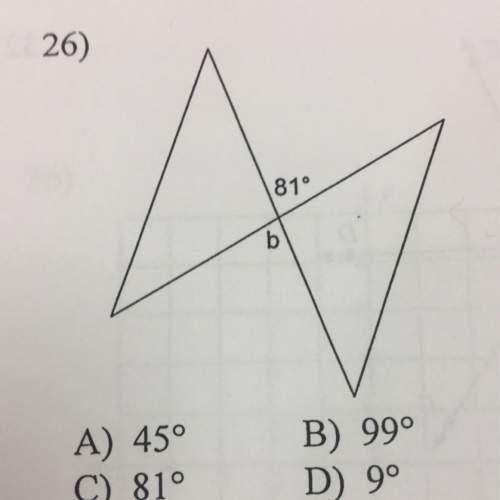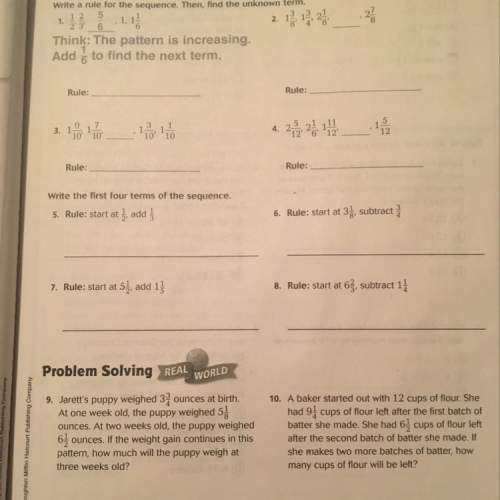
Mathematics, 10.09.2021 23:10 amandasantiago2001
4) Match each parent set on the left with its corresponding subset on the right.
a) { 8, 7, 6, 5, 4, 3, 2, 1} − − − − − − − − i) {1,3,5,7,9}
b) { 8, 6, 4, 2,0, 2, 4,6,8,...} − − − − ii) { 13} −
c) {1,2,3,4,5...} iii) {0, 2, 4,6,8,...}
d) {..., 9, 7, 5, 3, 1} − − − − − iv) { 1, 2, 3}

Answers: 1


Another question on Mathematics

Mathematics, 21.06.2019 18:00
Suppose you are going to graph the data in the table. minutes temperature (°c) 0 -2 1 1 2 3 3 4 4 5 5 -4 6 2 7 -3 what data should be represented on each axis, and what should the axis increments be? x-axis: minutes in increments of 1; y-axis: temperature in increments of 5 x-axis: temperature in increments of 5; y-axis: minutes in increments of 1 x-axis: minutes in increments of 1; y-axis: temperature in increments of 1 x-axis: temperature in increments of 1; y-axis: minutes in increments of 5
Answers: 2

Mathematics, 21.06.2019 19:00
Quadrilateral abcd in the figure below represents a scaled-down model of a walkway around a historic site. quadrilateral efgh represents the actual walkway. abcd is similar to efgh. what is the total length, in feet of the actual walkway?
Answers: 2

Mathematics, 21.06.2019 21:30
In a test for esp (extrasensory perception), the experimenter looks at cards that are hidden from the subject. each card contains either a star, a circle, a wave, a cross or a square.(five shapes) as the experimenter looks at each of 20 cards in turn, the subject names the shape on the card. when the esp study described above discovers a subject whose performance appears to be better than guessing, the study continues at greater length. the experimenter looks at many cards bearing one of five shapes (star, square, circle, wave, and cross) in an order determined by random numbers. the subject cannot see the experimenter as he looks at each card in turn, in order to avoid any possible nonverbal clues. the answers of a subject who does not have esp should be independent observations, each with probability 1/5 of success. we record 1000 attempts. which of the following assumptions must be met in order to solve this problem? it's reasonable to assume normality 0.8(1000), 0.2(1000)%30 approximately normal 0.8(1000), 0.2(1000)% 10 approximately normal srs it is reasonable to assume the total number of cards is over 10,000 it is reasonable to assume the total number of cards is over 1000
Answers: 1

Mathematics, 22.06.2019 01:00
33 ! use the following data to determine the type of function (linear, quadratic, exponential) that best fits the data set. (1, 2) (5, 7) (9, 8) (3, 4) (4, 5) (2, 3)
Answers: 1
You know the right answer?
4) Match each parent set on the left with its corresponding subset on the right.
a) { 8, 7, 6, 5,...
Questions

History, 31.08.2019 13:30




Computers and Technology, 31.08.2019 13:30



Mathematics, 31.08.2019 13:30





Physics, 31.08.2019 13:30



Geography, 31.08.2019 13:30

Social Studies, 31.08.2019 13:30



English, 31.08.2019 13:30





